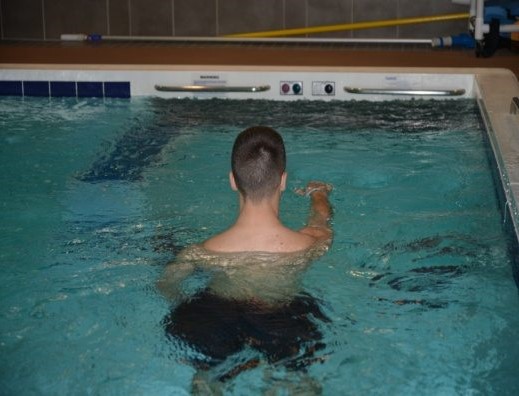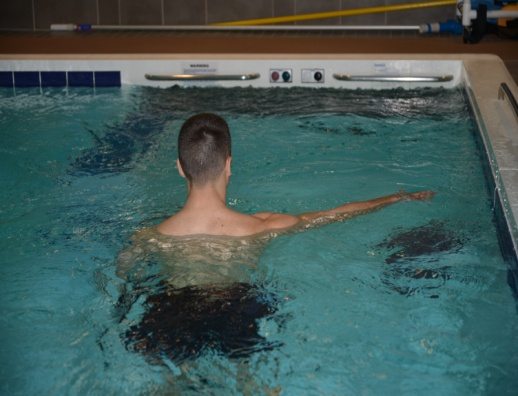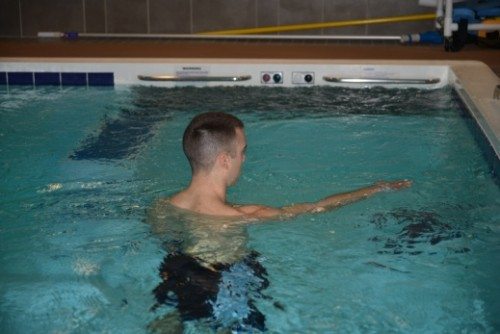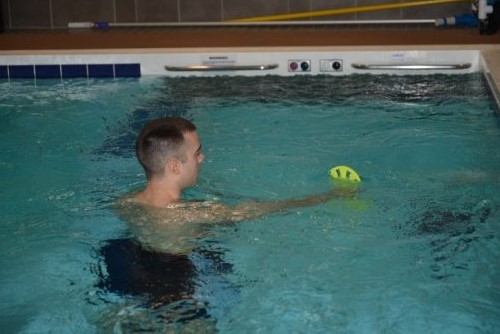This case study for a bankart repair offers hydrotherapy exercises to manage the injury.
Bankart repair is most commonly performed on patients who have chronic dislocations or shoulder instability. With these patients it is important to work on rotator cuff strength and shoulder stabilization to improve the overall function of the joint. Rehabilitation is just one of the many ways to use a hydrotherapy pool.
Hydrotherapy provides an ideal environment to focus on the stabilization strengthening of the shoulder by fatiguing the musculature using the current. This particular patient was able to start pool stabilization drills 4.5 weeks post anterior bankart repair. During his rehab, I followed the Mass General Hospital post surgical protocol for shoulder instability, which allows therapists to start stabilization drills between 2-5 weeks post surgery. It is very important to ensure that you do not stress external rotation until 8-12 weeks post surgery with these patients.
Bankart repair exercises
Figure 1: My thought process was to attack the shoulder muscles required in stabilization with an endurance based program using a hydrotherapy pool current. I started the first couple sessions by placing the patient perpendicular to the current. He was told to make small circles with an outstretched arm with the current set on a low speed.
Once the patient and I determined his baseline strength, we increased the size of the circle. The progression from this point was alternating clockwise and counter clockwise, figure 8’s, and the alphabet. I had the patient perform each exercise for 5 sets of 30 seconds.
Figure 2: When the patient was able to perform this exercise with minimal difficulty, he was progressed to 45 degrees of horizontal abduction with approximately 90 degrees of shoulder flexion.


Figure 3 shows an additional progression with the entire body turned to 45 degree angle and the shoulder at 90 degrees of flexion. A further progression can incorporate a pool toy such as a paddle, glove, or floating ball. Each pool toy has its benefits, depending on the therapist’s intentions.
Figure 4 shows a pool toy with the entire body turned to a 45 degree angle and the shoulder at 90 degrees of flexion.


This exercise is recommended to be performed at a depth and current level that is comfortable for the patient. Be creative with the exercise: alter the shoulder angles, elbow angles, or current speed. Changing these parameters will allow the patient to continue their progress.
This progression demonstrates how to incorporate shoulder stabilization exercises using a hydrotherapy pool. It works well for other shoulder injuries such as rotator cuff repairs, rotator cuff tendonitis, and shoulder instability. Hydrotherapy is an ideal tool for rehabilitation. This is just one example. There are many other great exercises for rehabilitation, training and conditioning.
This exercise should only be performed if it is appropriate for the patient and within the surgical protocols before incorporating it in a program.
~ Authored by senior aquatic therapist Jaeson Kawadler DPT, CSCS.
